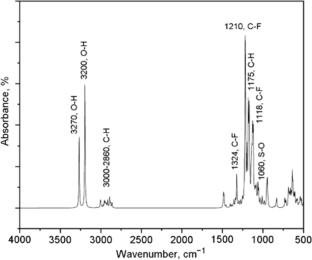含氟表面活性剂的化学结构对空气/水界面性能的影响
IF 0.9
4区 化学
Q4 CHEMISTRY, MULTIDISCIPLINARY
引用次数: 0
摘要
利用密度泛函理论(DFT)估计了几种gemini氟碳表面活性剂的形成热,比较了空气/水界面形成能(IFE)的值。结果表明,氟碳表面活性剂能有效降低空气/水界面的表面张力。制备了一种具有最高IFE值(绝对值)的表面活性剂的代表,并通过实验确定了其临界胶束浓度和相应的表面张力。本文章由计算机程序翻译,如有差异,请以英文原文为准。

Influence of Chemical Structure of Fluorinated Surfactants on the Air/Water Interface Properties
The formation heats for a number of gemini fluorocarbon surfactants have been estimated using density functional theory (DFT), the values of air/water interface formation energies (IFE) have been compared. It is shown that the fluorocarbon surfactants can efficiently reduce the surface tension of the air/water interface. One of the representatives of the surfactants, possessing the highest IFE value (in absolute value), has been prepared and its critical micelle concentration and the corresponding surface tension have been experimentally determined.
求助全文
通过发布文献求助,成功后即可免费获取论文全文。
去求助
来源期刊

Theoretical and Experimental Chemistry
CHEMISTRY, MULTIDISCIPLINARY-
CiteScore
1.60
自引率
10.00%
发文量
30
审稿时长
6-12 weeks
期刊介绍:
Theoretical and Experimental Chemistry is a journal for the rapid publication of research communications and reviews on modern problems of physical chemistry such as:
a) physicochemical bases, principles, and methods for creation of novel processes, compounds, and materials;
b) physicochemical principles of chemical process control, influence of external physical forces on chemical reactions;
c) physical nanochemistry, nanostructures and nanomaterials, functional nanomaterials, size-dependent properties of materials.
 求助内容:
求助内容: 应助结果提醒方式:
应助结果提醒方式:


